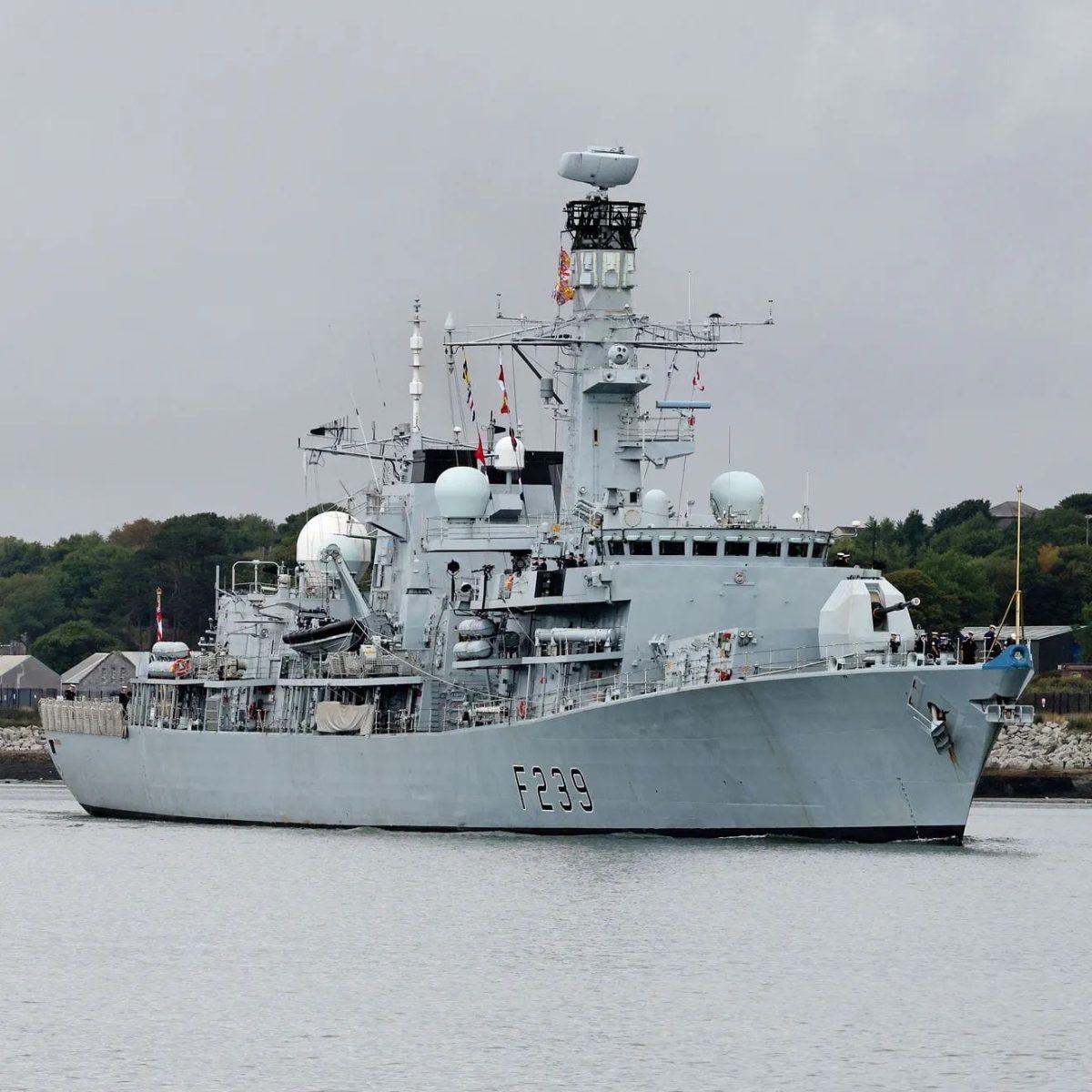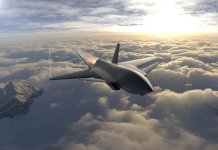In the latest instance of force projection, the Chinese People’s Liberation Army (PLA) fighter jets simulated an attack on a British warship transiting the Taiwan Strait.
The “fake attack” was simulated on HMS Richmond, one of the Royal Navy’s vessels accompanying the HMS Prince of Wales Carrier Strike Group, as it sailed through the Taiwan Strait alongside the US destroyer USS Higgins on Sept 12.
China considers Taiwan a renegade Chinese province and fiercely opposes the passage of foreign vessels through the Strait. The Taiwan Strait is a 110-mile-wide waterway separating mainland China from Taiwan.
The passage was, unsurprisingly, condemned by the Chinese Eastern Theatre Command as “provocative.” While it initially announced that it dispatched naval and air units to track the vessels, latest reports indicate that the Chinese fighter jets were instead tasked with conducting “constructive kills” against HMS Richmond. This means that the Chinese jets not only tracked but also mimicked a missile launch on the vessel.
As per reports, the Chinese jets executed multiple “attack runs,” climbing to altitude, pulling away, and banking at approximately 50 degrees, mimicking the flight path of an air-to-surface missile launch.
It is pertinent to note that China has an arsenal of some very lethal air-launched anti-ship missiles that could be used to attack hostile warships in flashpoints like the Taiwan Strait and the South China Sea, in the event of a contingency.
This includes the YJ-21 hypersonic anti-ship aero-ballistic missile, branded as a “carrier killer,” as well as the YJ-15 and YJ-17, which were recently unveiled at the September 3 Victory Parade.
The simulated attack of September 12 took place amid a broader deployment of the UK’s HMS Prince of Wales Carrier Strike Group through the waters of the Taiwan Strait and South China Sea.
The actions were described by British personnel as deliberate harassment and an “information warfare” tactic to signal targeting intent, though no live munitions were fired and no collision risks materialized.
🚨 BREAKING: Chinese jets reportedly executed “constructive kills”—simulated anti-ship strikes—on
Royal Navy frigate HMS Richmond during a Taiwan Strait transit.No shots fired. Radar locks. Attack runs. Message sent.
A NATO warship targeted. One misstep from catastrophe.… pic.twitter.com/q3UegyN556
— Jim Ferguson (@JimFergusonUK) September 30, 2025
“The Chinese forces were pretending to kill us,” said an officer on the HMS Prince of Wales aircraft carrier. “They follow the path they would go on if they were launching an attack,” he was quoted as saying by British media.
“They gain height, then pull away and turn at 50 degrees. It’s an info-war operation – they want us to know they’re targeting us,” he noted. “We were expecting a reaction, but not of a violent nature – we were confident that they wouldn’t really fire a missile.”
Another officer from the group of officers from the HMS Prince of Wales, Sub-Lt Rohan Lewis, called the incident harassment. “The Chinese were trying to harass us, four or five of them trying to get close. They tried to push us a little bit to see how far they can go,” he told The Telegraph.
However, most British officials believe that it was a valuable experience for the troops to learn more about the Chinese tactics, making it a “mutually beneficial” experience in terms of training.
This incident represents a calibrated escalation in gray-zone tactics that are coercive actions short of kinetic conflict by China to assert dominance in its claimed waters without crossing into open warfare.

Despite giving valuable lessons to both sides, such actions can also risk miscalculation. For example, a radar lock during such a simulation could be misinterpreted as hostile and could trigger accidental countermeasures.
In addition to the Taiwan Strait, Chinese vessels also followed the HMS Prince of Wales as it passed through the South China Sea’s disputed Spratly Islands.
China claims almost the entire South China Sea as its sovereign territory and has been rapidly expanding its military presence in the region, despite protests from other claimants, such as the Philippines and Vietnam, as well as an international court ruling.
On its part, the United Kingdom (much like the US, Australia, and Canada) has consistently argued that it has the right to freely navigate in international waters in the Taiwan Strait and the South China Sea.
“We have a direct interest in the international rules, the freedom of the seas, the freedom of navigation and the stability and security in the Indo-Pacific,” John Healey, the British Defense Secretary, told reporters earlier this year.
The simulated attack was referred to as a “brazen war posturing” by some British media outlets. However, it is not uncommon for China to conduct such manoeuvres, which are generally considered preparations for an actual contingency.
For instance, Chinese researchers have conducted simulated attacks on the USS Gerard R. Ford aircraft carrier in the past. In a series of more than 20 intense battles simulated on a widely used war game software platform employed by the Chinese military, the PLA successfully sank the USS Gerald R. Ford carrier fleet using a salvo of 24 hypersonic anti-ship missiles, as previously reported by the EurAsian Times.
In fact, a mock-up of the carrier was also spotted in China earlier.
China also routinely simulates encirclement of the Taiwan Strait and cutting the island off from the external world. In fact, new reports suggest that China has built mock-ups of several Taiwanese government structures to simulate an attack against them in what appears to be a preparation for a future invasion attempt.
Taiwanese Govt Buildings Spotted In China
According to satellite photos acquired by a Japanese think tank, Beijing has constructed new buildings resembling Taiwan’s main government buildings at its military camp in Inner Mongolia, signaling more organized preparations for a possible confrontation across the Strait. China has vowed to unite Taiwan with the Chinese mainland and has been making extensive military preparations for a potential invasion.
An analysis of satellite photographs acquired by the Japan Institute for National Fundamentals revealed that the People’s Liberation Army (PLA) had completed work on a “mock Judicial Yuan” at the army’s Zhurihe training base, as reported by South China Morning Post, which in turn quoted a Japanese newspaper, Sankei Shimbun.
This structure, according to the report, was connected to a 280-metre (918-foot) underground tunnel and was adjacent to a separate building that resembled Taiwan’s presidential office, as shown by Chinese state media in 2015.
The Sankei Shimbun claims that Beijing has constructed facilities at the site that resemble the structures of Taiwan’s defense and foreign ministries in recent years. It stated that satellite images seen in 2022 showed roadblocks were being set up by the Chinese People’s Liberation Army (PLA) forces near Taiwan’s Ministry of Foreign Affairs and the mock leader’s office before armoured vehicles entered the area.
A “brigade-sized force training to engage in confrontations with a simulated enemy force guarding the presidential palace” was depicted in August of that year, according to the study, which stated that there is an indication that such training is still taking place. Notably, the think tank’s researcher, Maki Nakagawa, was quoted in the Japanese publication as saying that Beijing had “rapidly renovated” the Zhurihe training base and implemented “combat-oriented training” there.
Experts predict that a Chinese invasion of Taiwan could take place as early as 2027, and these mock-ups are evidence that Beijing is leaving no stone unturned to make it a foolproof attempt.
- Contact the author at sakshi.tiwari9555 (at) gmail.com
- Follow EurAsian Times on Google News




